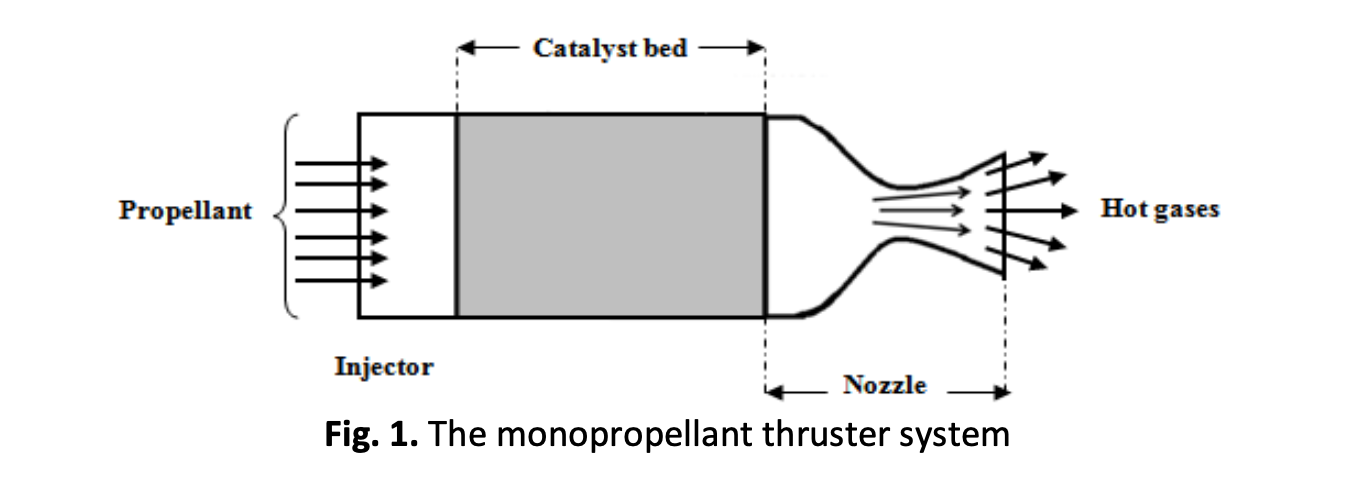Optimization of 10 N Monopropellant High Test Peroxide Thruster for Space Applications
DOI:
https://doi.org/10.37934/arfmts.100.2.6077Keywords:
Monopropellant, propulsion, high-test peroxide, catalyst bed, thrusterAbstract
Monopropellant thruster is one of the most propulsion system types developed in the space industry. This system uses a single type of propellant that reacts in porous medium catalytic packed bed to generate thrust in the form of hot gases. The last decade, green propellant hydrogen peroxide (H2O2), also known as High Test Peroxide (HTP), thanks to its low cost and easy to store as liquid, is used as an alternative solution of hydrazine which is very toxic and not environmentally friendly. In the current study, hydrogen peroxide monopropellant thruster is investigated for application in the future satellites. A numerical simulation is performed using the Computational Fluid Dynamics (CFD) software ANSYS Fluent in order to simulate fluid flow of hydrogen peroxide in thruster, and the finite volume method was employed for resolving the governing equation. Species transport model is applied in the single-phase reaction simulation using the Eddy Dissipation model (EDM) for turbulence-chemistry interaction. A mathematical approach based on the local thermal non-equilibrium (LTNE) model is used to describe the heat transfer through solid and fluid phases in the packed bed consisting of identical spherical silver particles. Several simulations performed allowed an optimal design of the injector, catalyst bed length and diameter and nozzle geometry, to achieve a 10N monopropellant thruster with hydrogen peroxide at 87.5% concentration.
Downloads
































